The year was 1958. Stereophonic sound was the new “thing” in high fidelity audio. Stereo records, in development for years, finally became a reality in late 1957 when the Audio Fidelity label became the first company to release compatible stereo records.
In this case, “compatible” meant they could be played on ordinary monaural turntables but only if the mono cartridge was replaced by a stereo cartridge using a stylus of around 0.7 mil. Monaural LP and 45 rpm records used a stylus of 1 mil, which would damage the groove of a stereo record.
Prior to perfection of the “compatible” stereo record, various schemes were tried which involved two tone arms, then a forked tone arm with two separate pickups and two bands for each audio channel (left and right).
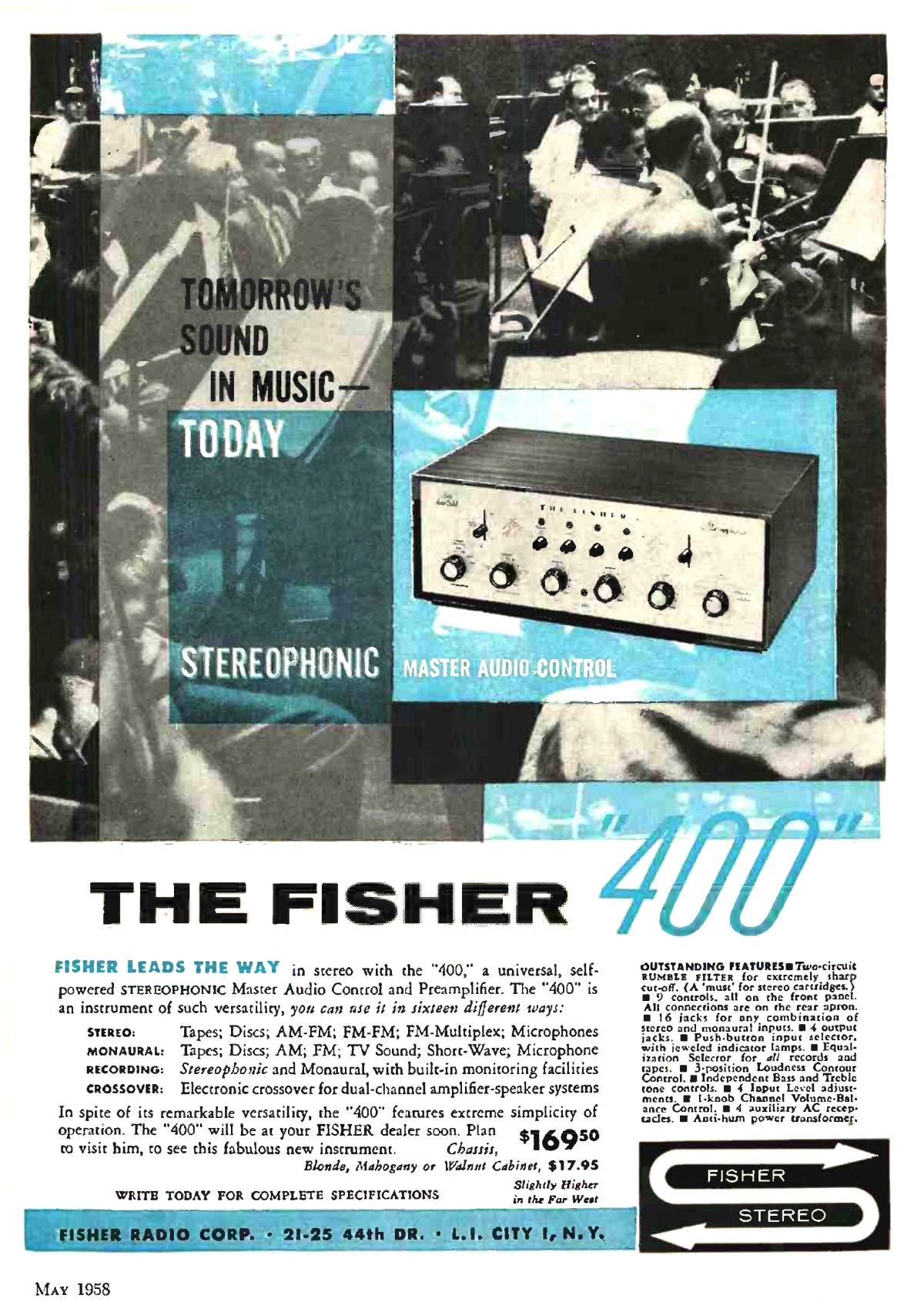
Early advertisement for Fisher’s 400-C Master Audio Control, May 1958
Audio Fidelity had the market to themselves for some months, but by mid-1958, many of the major record labels began to issue stereo recordings of their own.
Stereophonic reel-to-reel tapes had been around since 1950 and began selling well around 1955 to those fortunate audio enthusiasts who had made the investment into two amplifiers and two speaker systems.
Meantime, the push was on to adopt stereophonic sound on a more mainstream level. Despite some naysayers who complained that “stereo” simply meant a new way for manufacturers to make twice as much money from consumers by selling them two amplifiers and two speaker systems, anyone who heard a stereophonic demonstration was soon convinced to make the change.
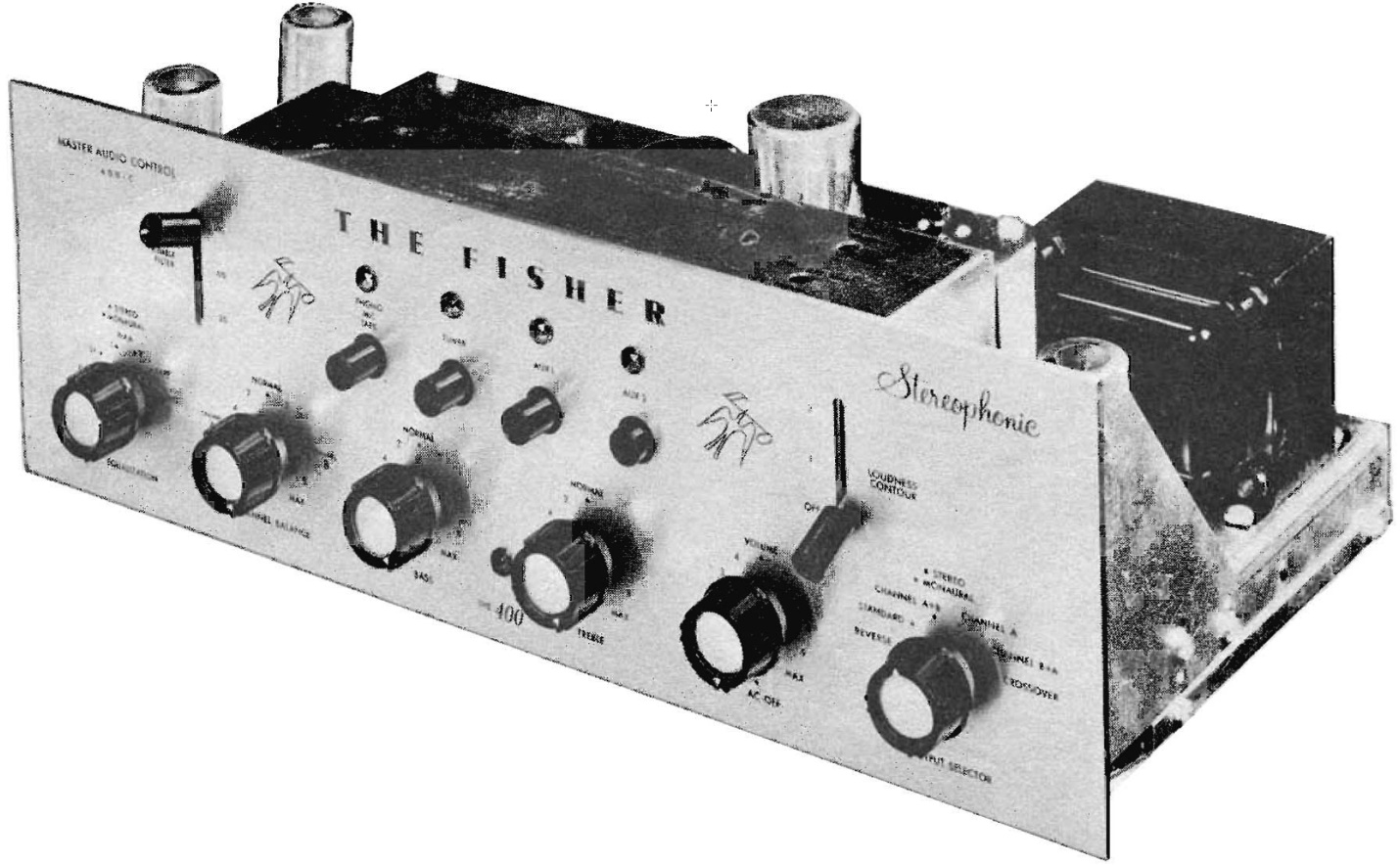
The Fisher 400-C Master Audio Control
At first, converting to stereo for the end user was no easy feat. If the person had made a recent investment in a good high fidelity system, then yes, they would have to go out and buy a second amplifier and a second speaker. Eventually they would have to either buy a new stereo phonograph, or have their present phonograph converted for stereophonic reproduction by adding a new cartridge and stylus and doing some rewiring within the unit itself.
The engineers at Fisher Radio Corporation could see the handwriting on the wall. Stereo was not just coming – it was here, and here to stay. To remain in business Fisher, as well as all hi-fi manufacturers of the time, would have to adapt to stereo.
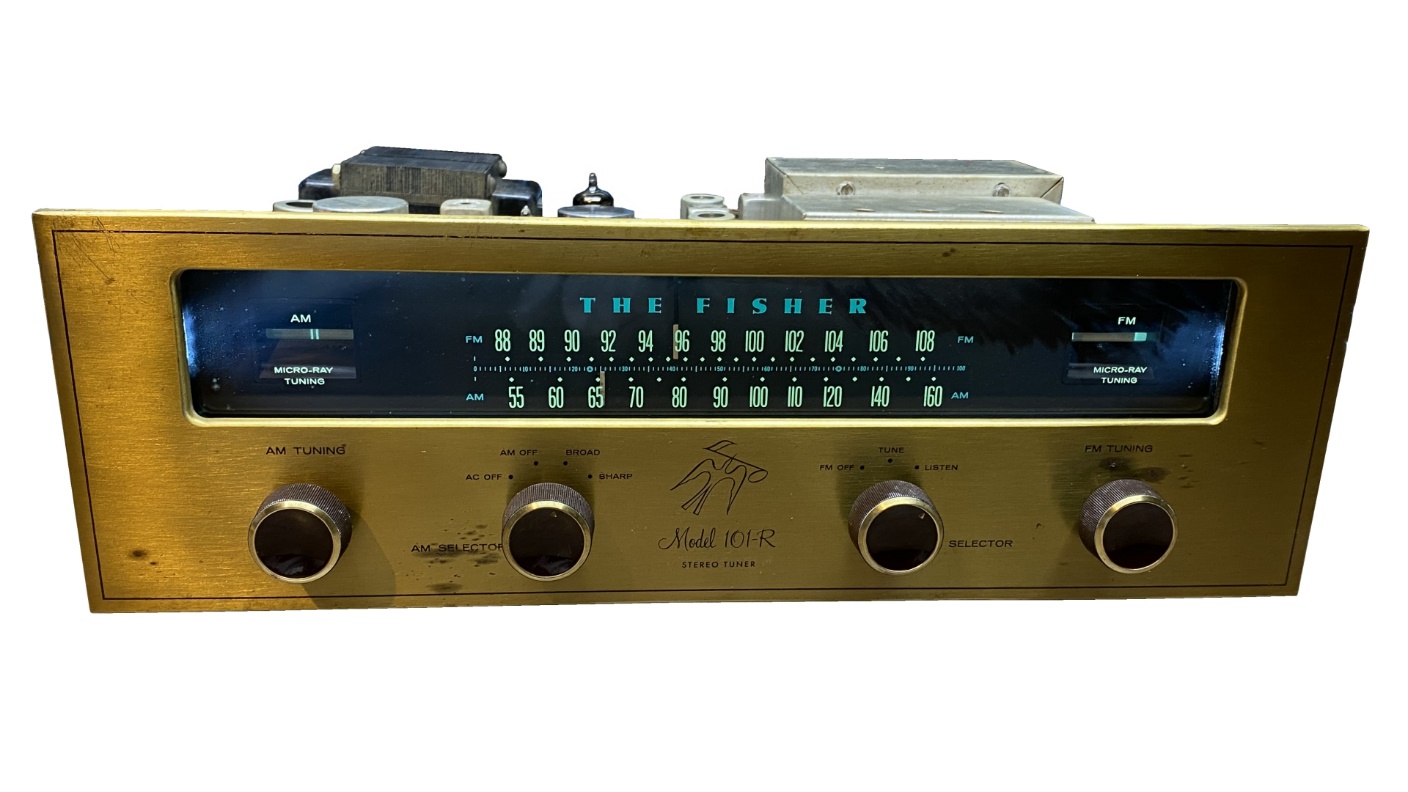
The Fisher model 101-R “Stereo” Tuner
It appears that Fisher started slowly in stereo. Their first advertised stereophonic product was a control preamplifier, which Fisher called Master Audio Control. Model 400-C was first advertised in May 1958 and offered true stereophonic control of any one- or two-channel audio input. It would still require two monoblock power amplifiers, as Fisher would not have a stereo power amplifier available until early 1959 (model SA-300). Until then, if a user wished to purchase Fisher, he or she would have to buy two 125-A or 200-A mono power amplifiers to go with that nice new 400-C.
By very late summer, Fisher would have an almost complete line of stereophonic equipment.
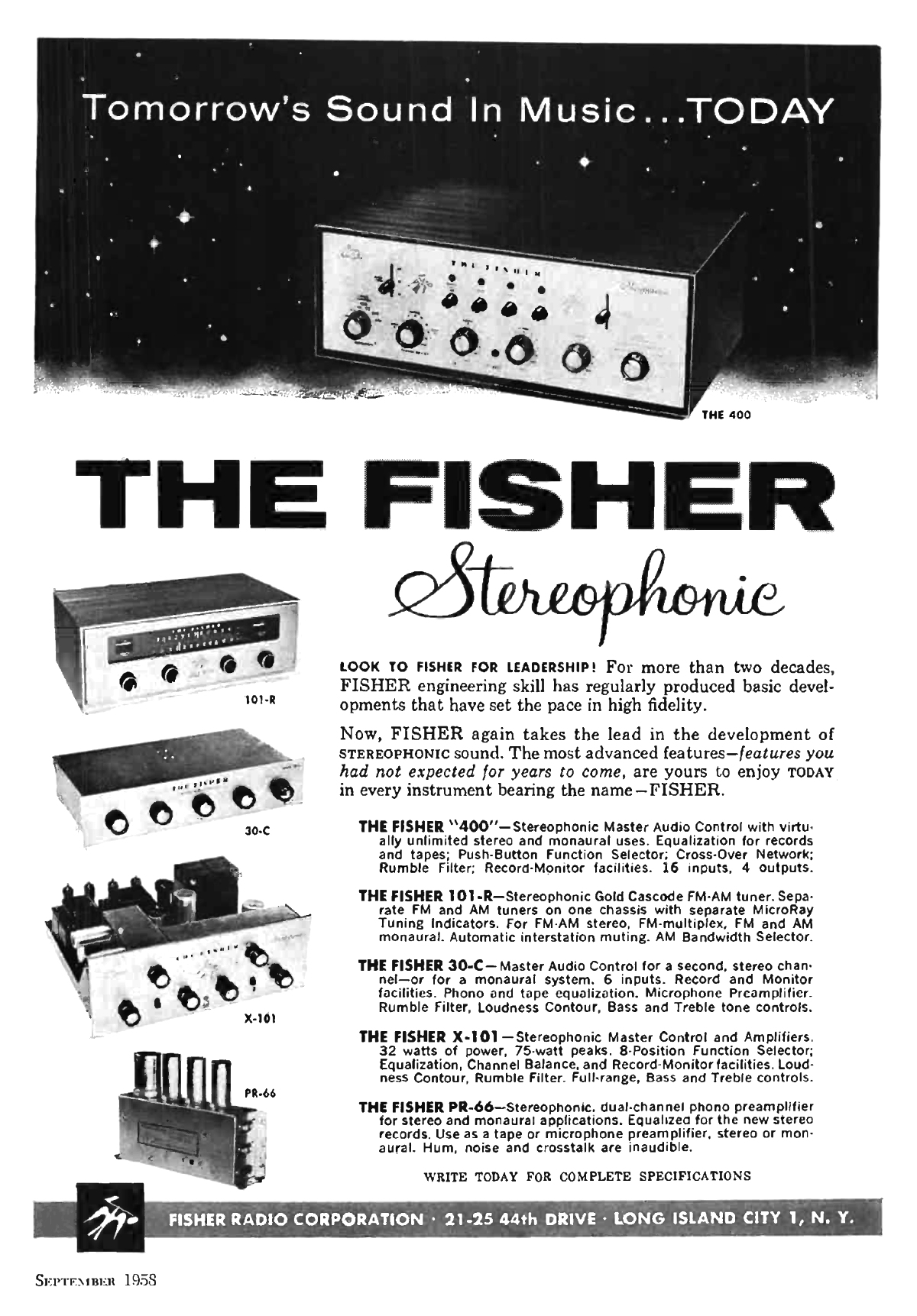
Fisher stereo equipment ad, September 1958
Model X-101-ST, their first integrated amplifier, offered a power output of around 15-17 watts per channel using EL84 output tubes. It offered inputs for a tuner, a tape deck, two phonographs, and two auxiliary sources. It is unusual in that its input jacks are on the bottom of the unit.
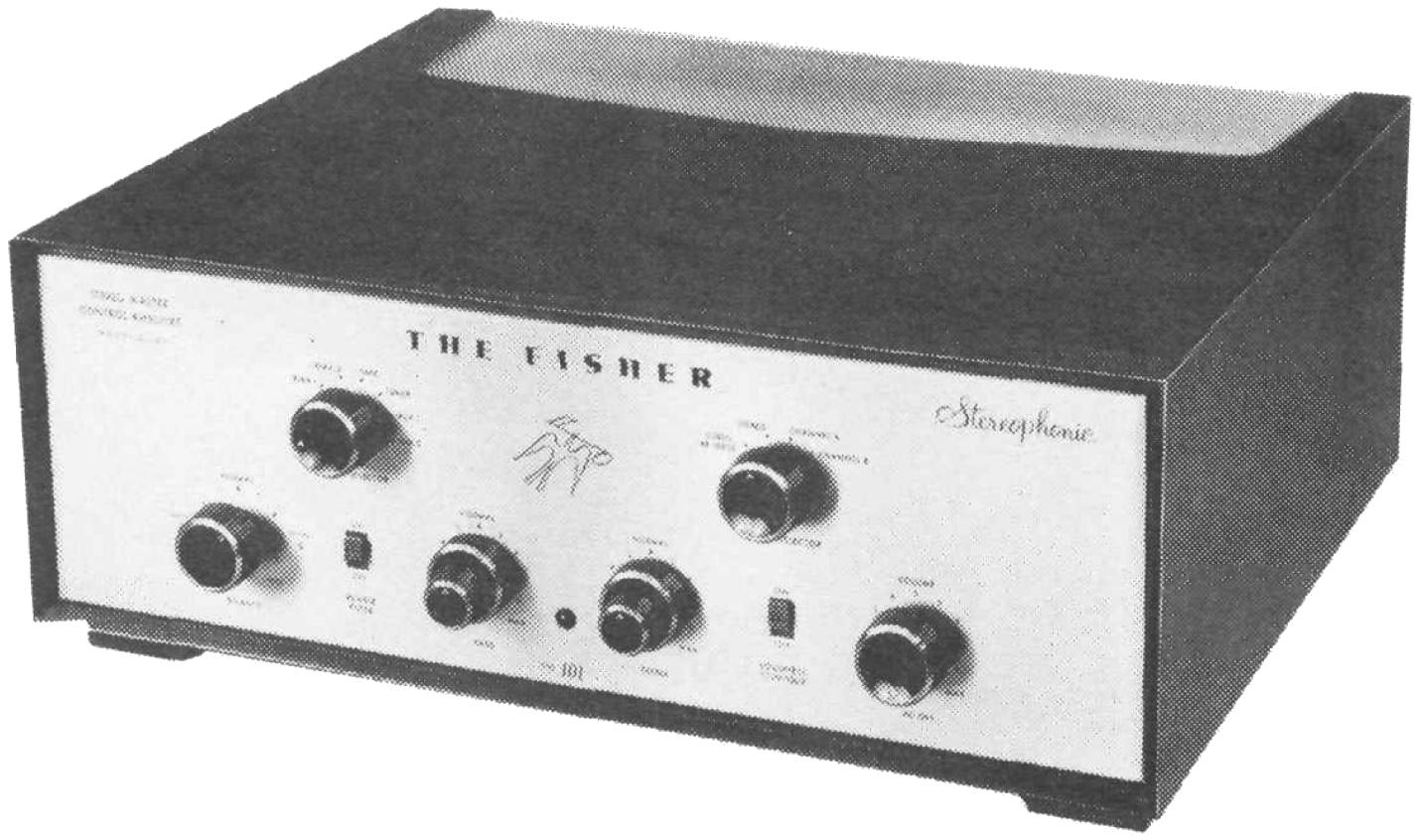
The Fisher X-101-ST, the company’s first stereo integrated amplifier
For the user who already had a mono control preamplifier, he or she could add a second Master Audio Control, model 30-C, or use two 30-Cs to accomplish the same thing. (Or save space and just use a single 400-C.)
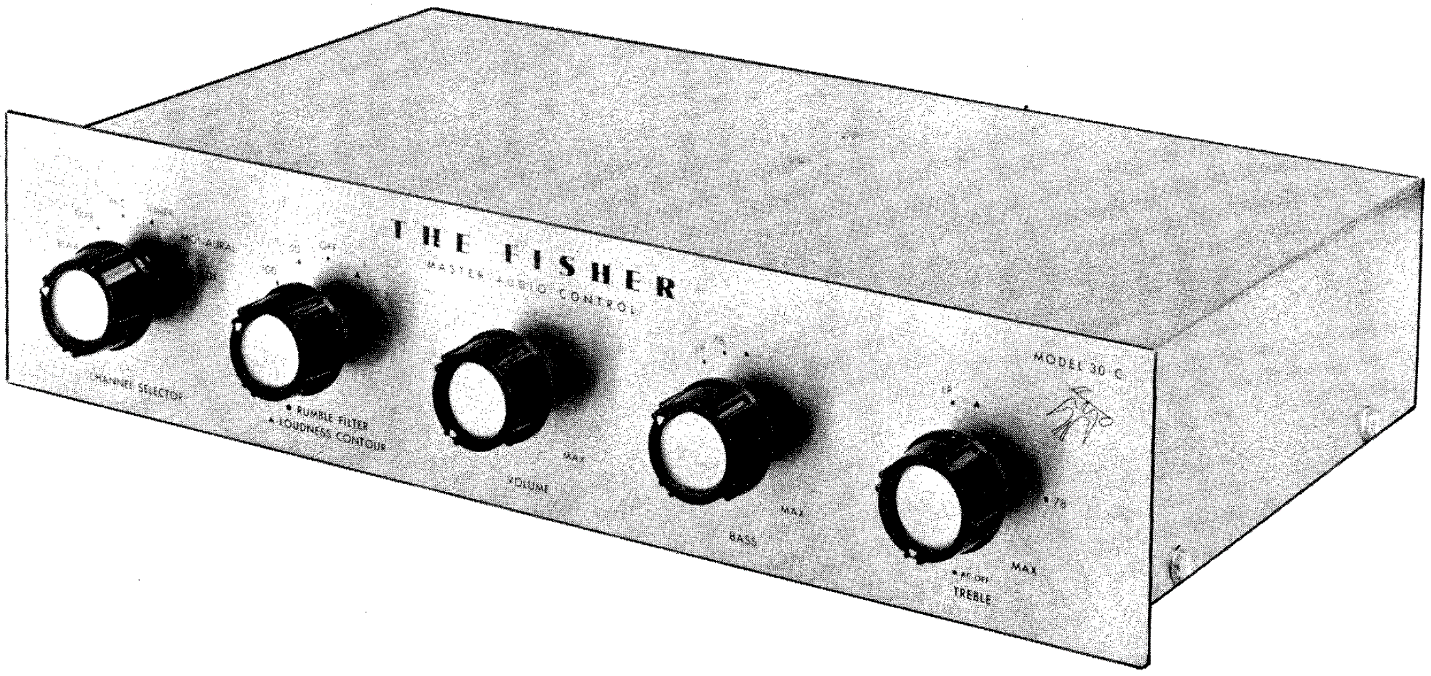
The Fisher 30-C add-on Master Audio Control preamplifier
If the audio enthusiast had converted their phonograph to stereo, Fisher offered a new stereo phono preamp, model PR-66, which could also be used for tape decks. The new PR-66 augmented their mono PR-6 phono preamp.
(A side note: Oddly enough, Fisher only kept the PR-66 on the market for a year or two, while they continued to sell their mono PR-6 well into the later part of the 1960s.)
For some time, a few radio stations in larger cities which had an AM and an FM signal had been broadcasting stereo programs – by sending out the left channel audio on one signal, and the right channel on the other. Fisher made it possible for the end user to receive these “AM-FM stereo” broadcasts when they introduced the new 101-R tuner. This was Fisher’s first tuner to allow the end user to select either AM, FM, or both at the same time in order to be able to receive “AM-FM stereo”.
The fact remained that unless the purchaser chose the X-101-ST integrated amplifier, he or she would have to invest in a 400-C and two Fisher monoblock amplifiers (and, of course, two speaker systems) to have a complete stereo system.
Fisher continued to sell its “Series Ninety” line of monaural tuners and tuner-preamplifiers, along with the monaural TA-500 receiver (tuner and integrated amplifier in one package). It was as if Fisher was hedging their bets. Apparently, it all worked out for Fisher in the end. Even as Fisher continued to introduce new stereo equipment in 1959, the Series Ninety and TA-500 models remained in the product line through at least Spring 1959. Eventually, of course, these were abandoned in favor of all-stereophonic audio equipment.
It must have been an exciting time as well as a frustrating one, unless the end user happened to be considering high-end audio equipment in the latter part of 1958.